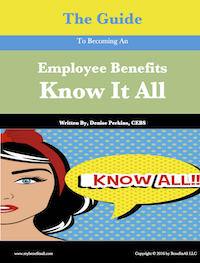July 2016
One-Person, Self-Employed Retirement Savers Are Being Ignored
July 28, 2016
The retirement services industry claims it has a retirement savings product for everyone. That government-sponsored retirement savings plans targeting those without access to a workplace retirement plan are redundant. Technically, the industry may have a point. You don’t have to save for retirement in an employer-sponsored plan; there are individual retirement plans already available. But if you are a low-wage worker, you’re not likely to be aware of these plan options and would have no idea how to get started using one. So a state or federal government retirement savings program marketed to you is not a bad idea.
But what if you are a low- to middle-income, one-person, self-employed worker in need of saving for retirement? Who’s marketing retirement plan products to you? Basically, no one...
Who Are The One-Person, Self-Employed
So who are these often low-balance retirement savers? Many fall into the one-person, self-employed category. According to a report from Emsi, the largest self-employed occupations that are also the lowest earning include:
- Child Care Workers
- Maids
- Farmers
- Landscape Workers
- Hairdressers, Hairstylists and Cosmetologists
- Automotive Service Technicians
- SEP IRA
- SIMPLE IRA
- Solo 401(k)
- Defined Benefit Plan
- Traditional and Roth IRA
- Robo-Advisor (e.g., Betterment)
Comments
Another Day, Another National Retirement Plan Acronym
July 21, 2016
Congressman Joe Crowley of New York is just the latest politician to formally rollout his legislative version of a national retirement plan. The Act is titled the “Secure, Accessible, Valuable, Efficient Universal Pension Accounts” (SAVE UP Accounts). Its target customers are workers whose employers do not currently offer a retirement savings plan. It has many of the same features as other federal and state retirement plan proposals:
- Automatic enrollment in an IRA-like plan
- Pre-tax employee contributions
- Limited number of low-cost investment funds
- Opt-out option
- Requires an employer contribution indexed for inflation and based on employee hours worked (waived if employer is contributing to an existing retirement account)
- Provides a limited employer tax credit to offset the cost of employer contributions
- Sets target benefit amounts
- Creates a collective investment pool to protect against losses
According to an article in Plan Sponsor, a recent report by Natixis Global Asset Management ranked the United States tenth among wealthy nations for retirement security. Some of the reasons put forth in the report for the tenth place ranking are income inequality, lack of access to a workplace retirement plan and a low contribution rate. The report suggests that the U.S. “learn from the experiences of other countries around the world.”
But the people in the countries ranked one through nine have numerous advantages over U.S. citizens when it comes to saving. Chief among them is lower health care costs and less income inequality, not to mention the many social programs like paid leave and childcare benefits. Continue Reading...
Despite Resistance, We Are Getting Closer to a Public Option Health Plan
July 14, 2016
Politicians at all levels are too afraid to upend a health care system that does not work for all because of the impact that change will have on some. The fact that that "some" consists of about 16 million health care related jobs and 18% of the U.S. economy is reason to think before we act. But with nearly a century to think about and work out a better health care policy, it’s clear that there’s never been a real strategy for revolutionary change. Instead, politicians focus on incremental health care policy changes, like the President’s latest proposal for a limited public health plan option.
On Monday, July 11, 2016, President Obama became the first sitting U.S. President to write an article for publication in a scholarly or academic journal. Published by the Journal of the American Medical Association (JAMA), the article titled, "United States Health Care Reform: Progress to Date and Next Steps," recounts the process of health care reform from 2008 to the present. The article outlines the many legislative actions the President and his administration took to:
- expand health insurance coverage
- provide financial support to health insurance buyers
- improve health care technology and research and
- reform health care payment models
If health insurers merge as planned or drop out of the exchanges leaving little or no health plan options to choose from, something has to fill the gap. The only thing that can is a public option. Those who think that reducing the number of health plan options on the exchanges is a way to undo Obamacare are being naïve. People still want and need health insurance, not to mention that they are required to have it. I don’t see any other option but to offer a public health plan where few or no health plan options exist. Continue Reading...
EpiPen--Price Gouging Made Easy
July 07, 2016
Fortunately, I do not need an EpiPen. However, I live with someone who does. Less than 10 years ago he paid about $25 for one EpiPen; Today, he pays $250. Also, he’s forced to purchase two EpiPens at a time because of new FDA guidelines and subsequent changes by the drug manufacturer. That doubles the price to $500.
So why is the price of the EpiPen increasing when a vial of hormone epinephrine cost just $1? Political connections and sophisticated, target marketing.
Bloomberg has an excellent article on how Mylan Pharmaceuticals purchased EpiPen when it was bringing in about $200 million a year, The CEO of Mylan, Heather Bresch (formerly, Heather Manchin), is a U.S. Senator’s daughter. Through lobbying of the federal government (my assessment, not Bloomberg’s) and extensive marketing by outside experts, she and Mylan turned EpiPen into a $1 billion a year product. A look at Bresch’s profile on the Mylan website basically confirms that more EpiPen price increases are in the future as Mylan aims to reach its 2012-2018 earnings goals. And then there’s this...
A Little More About Heather Bresch
Bresch claimed she had an MBA degree she did not have and used her connections and influence to perpetuate this falsehood. She later backed away from the claim but only after a drawn out, public scandal. This is relevant to the story of how the price of this drug increased so rapidly in the hands of someone with political connections and is not afraid to use them. Heather Bresch is politically brilliant and she knows as much about pharmaceutical laws, regulations and guidelines as anyone (mostly because she studies these laws, has access to the people who write them and helps draft some herself).
The point – Heather Bresch heading Mylan Pharmaceutical Company is like placing a pharmaceutical lobbyist at the head of a pharmaceutical company. Knowledgeable—check. Connected—check. Price gouging protector—check. Continue Reading...


 Denise Perkins
Denise Perkins




